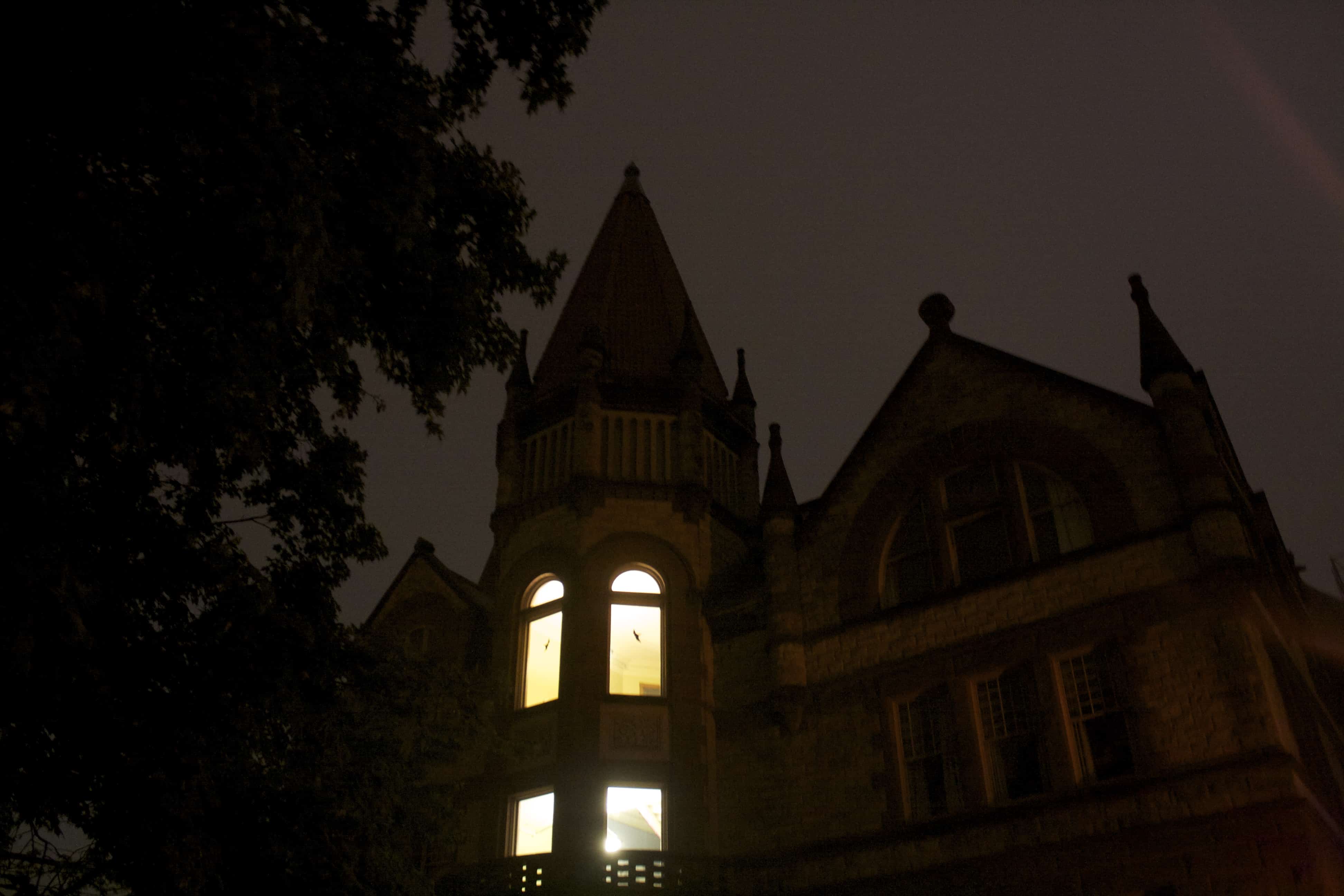Toronto has been a leading centre for astronomy research for more than a century. On the sunny afternoon of May 25, Professor Emeritus John Percy of the Department of Astronomy and Astrophysics at the University of Toronto emphasized this point over the course of his heritage walk “Campus and Cosmos: Toronto’s Astronomical Heritage.” The walk, spanning the U of T campus and lasting 90 minutes, was held as part of the city-wide, weekend-long Doors Open event.
The tour started near the entrance of the Royal Ontario Museum, which was operated by U of T until 1968 and is now an Ontario provincial cultural agency. It was also home to the Toronto chapter of the Royal Astronomical Society of Canada, a nation-wide astronomy club with over 4,000 members.
Fun fact #1: The ROM housed the McLaughlin Planetarium from 1968 until 1995. It attracted hundreds of thousands of people every year, including schoolchildren seeing the “dark sky” for the first time. It was closed due to provincial cuts. The Ontario Science Centre has since taken on a significant role in educating and inspiring the public about astronomy.
We continued on to Victoria College, where the Institute for the History and Philosophy of Science and Technology, as well as a museum of astronomical achievements, can be found on the third floor.
At the present site of the UTSU building is the Stewart Observatory, which was the largest meteorology building in Canada when it was built in 1853.
Fun fact #2: That dome on top of the UTSU building, currently painted black? In 1881, it housed a refracting telescope, which was used to observe the transit of Venus. The telescope has since moved around and, since 1984, has been located at the Canada Science and Technology Museum in Ottawa.
University College is the founding college of U of T, and the astronomy department at U of T was established right here by Clarence Augustus Chant. Chant was responsible for introducing astrophysics to U of T at the turn of the century, and, according to Percy, astronomy at U of T moved “from mathematical and surveying, to mainstream and frontier science.”
Fun fact #3: Chant’s efforts to promote astronomy contributed to the donation and construction of the David Dunlap Observatory in Richmond Hill, completed in 1935. At the time, it was the second-largest telescope in the world. The first black hole to be found, Cygnus X-1, was discovered there.
A concrete block in front of the Sandford Fleming Building marks where a magnetic observatory stood between 1840–1850, used to research why a compass needle would swing north. Another line on a concrete block marks the Toronto Meridian, or the official north-south position of Toronto which would determine Toronto time until the introduction of Standard Time.
Fun fact #4: Several U of T buildings, including the Galbraith Building and the McLennan Physical Laboratories, were completed around the 1960s, as many World War II veterans returned home to pursue post-secondary studies and produced children in the baby boom. Science and engineering rapidly grew in the post-war period.
The tour also reinforced that modern Canadian scientists have been at the forefront of space science worldwide for decades. Research into the northern lights has led to a deeper understanding of the “space weather” that affects satellites and astronauts in space. Canada was the third country in the world (after the USA and USSR) to put a satellite in space, the Alouette 1. Professor Allen Yen was a pioneer in radio astronomy, and one of his achievements was to connect a telescope in Algonquin Park with one in Penticton, BC, “virtually” creating one telescope with a diameter of 2,000 km. More recently, professor. J. Richard Bond was the recipient of the prestigious Gruber Cosmology Prize for his work on the structure and evolution of the universe.
Public astronomy education is a strong priority for Percy, who is cross-appointed with the Ontario Institute for Studies in Education (OISE) to help develop public school curricula. Beginning in the late 1990s, astronomy became a mandatory component of the Ontario elementary and secondary school systems.
The Department of Astronomy and Astrophysics offers free public tours on the first Thursday of most months, including a presentation and tour of their telescopes for viewing in the late evenings.


